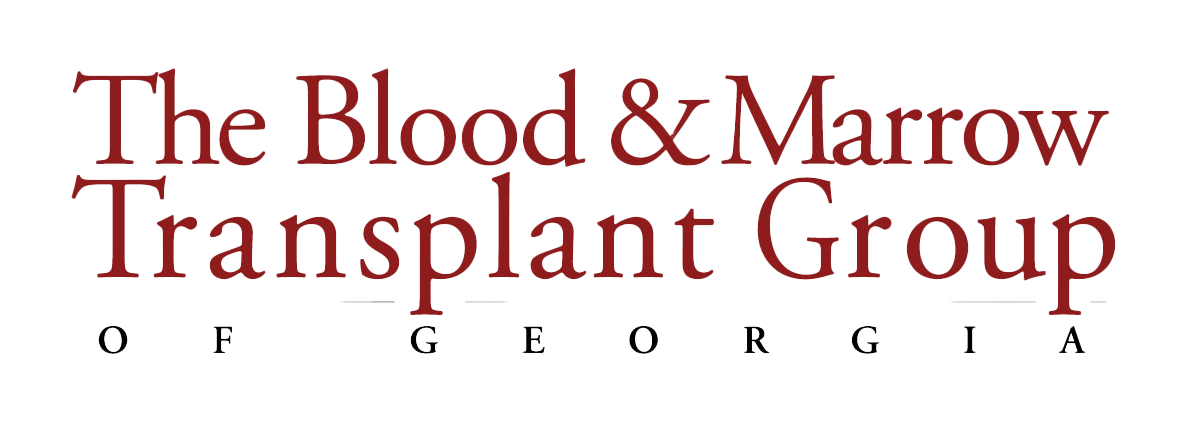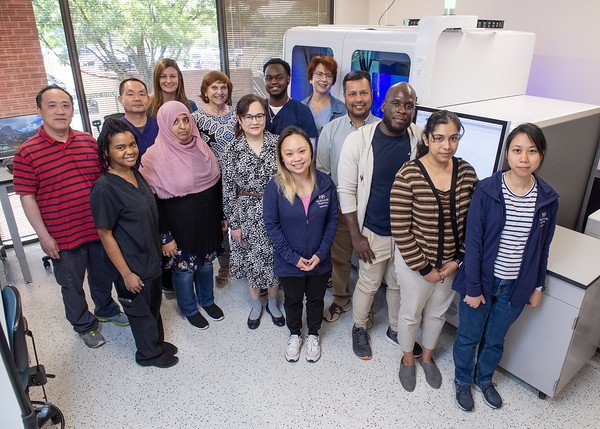Northside Hospital Flow Cytometry and Molecular Diagnostics Laboratories
Diagnostic testing available to the blood and marrow transplant/leukemia/immunotherapy patient
NH Flow Cytometry and Molecular Diagnostics Laboratories, under the direction of Irina Grigorieva, PhD, perform high-complexity clinical assays by utilizing innovative equipment and progressive technologies in their 4,600 square feet of state-of-the-art facilities. They provide outstanding customer care by assisting clinicians with diagnostic work-up testing, determining disease prognostic indicators, quickly identifying early relapses, and providing post-treatment assessment and diagnosis.
Both laboratories meet the requirements of CLIA, the Georgia Department of Human Resources, JCAHO, and the College of American Pathologists.
Available flow cytometry services
10-color immunophenotyping for evaluation, diagnosis and monitoring
Comprehensive and custom-designed antibody panels for flow cytometric analysis
Expression analysis of surface and cytoplasmic antigens
Enumeration of CD34-positive precursor stem cells for transplanting leukemic patients
Minimal residual disease flow cytometry testing is now available:
Minimal Residual Disease in Multiple Myeloma – test is developed based on European Myeloma Network (EMN 2013) and Consensus Guidelines of International Clinical Cytometry Society (ICCS 2016). The lab-developed assay is validated for 10 antigens, detection of the clonal plasma cells with LLOQ of 0.01%
Minimal Residual Disease in B-cell Acute Lymphoblastic Leukemia – powerful predictor of outcome in acute leukemia is used in therapeutic stratification for acute lymphoblastic leukemia protocols. The test is developed, and the analysis is performed based on recommendations and the Method Summary of Children’s Oncology Group COG protocols, based on 13 antigens analysis with the levels of detection of B-lymphoblasts 0.02% (LLOQ) and 0.002% (LOD)
Available molecular diagnostics services
Pre-transplant genotyping of leukemia patients
Post-transplant engraftment follow-up by micro-chimerism assay
Monitoring of CMV viral load post-transplant
BCR-ABL1 fusion transcript analysis by RT-PCR
JAK 2 V617F mutation analysis by PCR
Minimal residual disease molecular diagnostic testing is now available:
Calreticulin (CALR) gene analysis, common variants in exon 9. Somatic mutations in CALR gene are identified at high frequency in patients with essential thromobcythemia (ET) and primary myelofibrosis (PMF) and other myeloproliferative neoplasms, albeit at the lower frequency (refractory anemia with ringed sideroblasts associated with marked thrombocytosis, myelodysplastic syndrome, chronic myelomonoytic leukemia, atypical chronic myeloid leukemia. CALR mutation serves as diagnostic and in some cases as prognostic marker for disease progression.
NPM1 (nucleophosmin) gene analysis, exon 12 variants. detected in about 30% of adult patients diagnosed with primary Acute Myeloid Leukemia (AML). This is a useful marker for minimal residual disease (MRD) monitoring in AML.
NGS (Next Generation Sequencing)-based assays for diagnostics and monitoring of acute leukemia and myeloproliferative neoplasms now available:
NGS panel for myeloid leukemia – panel of 43 genes involved in differentiation pathways of myeloid lineage, a combination of hotspot mutational regions and full coding regions. Offered for sensitive mutation screen in bone marrow and peripheral blood samples.
NGS panel for screening myeloproliferative neoplasms – sub-panel, limited to screen of driver mutations commonly detected in myeloproliferative neoplasms: JAK2, CALR, and MPL
FLT3 Mutations Analysis- detects internal tandem duplication (ITD) mutations and mutations in the tyrosine kinase domain (TKD) of FLT3 in acute myeloid leukemia (AML). Presence of these mutations in AML provide prognostic information and can aid in the determination of therapeutic regimen. This assay is added for myeloid NGS panel, to compensate for limitations of NGS technology in detecting long DNA inserts.
Learn More about our Facilities:
Northside Hospital Blood and Marrow Transplant, Leukemia and Immunotherapy Unit
Northside Hospital Hematopoietic Stem Cell Processing Laboratory
Northside Hospital Flow Cytometry and Molecular Diagnostics Laboratories
Flow Cytometry and Molecular Diagnostic Laboratory leadership team
Flow Cytometry Laboratory team members
Molecular Diagnostic Laboratory team members






